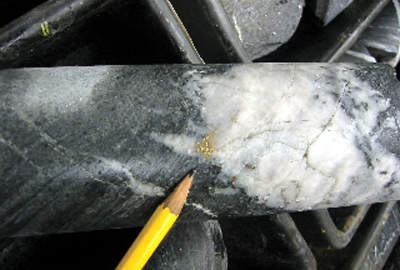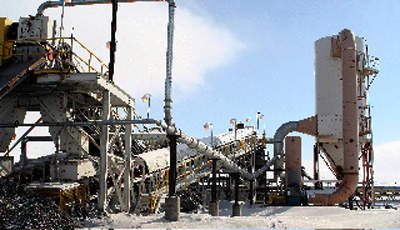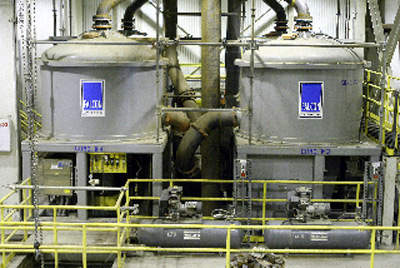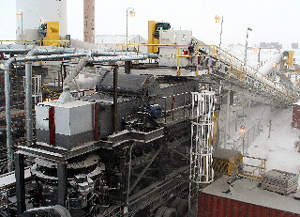Canadian mining company NovaGold Resources Inc made the transition from explorer/developer to producer when it achieved first gold production in September 2008 from its Rock Creek project near the town of Nome, Alaska.
The project was suspended in November 2008 due to mechanical and technical start-up issues, environmental issues and the global recession. It has since been under care and maintenance.
The Rock Creek project is part of the company’s integrated Nome operations, which includes two open-pit mining operations – Big Hurrah and Nome Gold. Rock Creek is at the most advanced stage of development with 90% construction completed. The project is designed to produce 100,000oz of gold annually.
NovaGold holds title to mining claims covering about 5,700ha in the area after acquiring Alaska Gold Company in 1999. The projects are situated partially on land wholly owned by AGC and partially on Native Alaskan land. NovaGold has an exploration and mining lease with the Bering Straits Corporation and a surface use agreement with the Sitnasuak Native Corporation.
The presence of nearby infrastructure and power coupled with simple mining and processing techniques have reduced capital costs to less than $200m, which was raised through equity financing. Although originally designed with a four-year mine life, NovaGold had plans to incorporate resources from the adjacent Saddle deposit and hopes ultimately to extend the mine life to ten years.
NovaGold announced its intention to sell Rock Creek and has been considering offers since October 2010. In March 2011, the company sold about 11,500 acres of Nome operations to use the proceeds towards the development of the Galore Creek and Donlin Creek projects. The company owns 50% share in both these projects. Teck Resources holds the remaining shares in Galore Creek and Barrick Gold holds 50% of the shares in Dolin Creek.
Geology
The Rock Creek and Big Hurrah deposits are underlain by bedrock consisting of several metamorphic rock sequences, known as the Nome Group, which consist of four major units. The basal unit is a complexly deformed pelitic schist, with a mixed unit consisting of mafic, pelitic, and calc schists and marble forming the next unit. The third unit is a mafic-dominated schist, and the top unit consists of impure marble.
The main Rock Creek ore body consists of two distinct mineralisation types, Albion Shear veins and Tension vein ores. The Albion veins are best described as sheared quartz vein, breccias with crushed and broken material in the shear. The Tension veins are tensional quartz veins next to the shear veins.
The Albion veins contain fine-grained sulphides and sulphosalts, while the Tension stockwork veins have a relatively simple mineralogy of quartz, iron carbonates, sulphides and free gold. The Albion material is a more complex ore type and drives the process scenario required at Rock Creek.
At Big Hurrah, gold occurs primarily in its native state and is found in quartz veins encased in thrust fault zones.
The major difference between the Rock Creek ores and the Big Hurrah ore is the presence of organic carbon. The Big Hurrah deposit is smaller but higher in grade.
Resources
A resource estimate for Rock Creek and Big Hurrah, completed in February 2008, has identified combined proven and probable reserves of 510,000oz of gold, with additional indicated resources of about 250,000oz and inferred resources of about 86,000oz.
As of October 2009, all three properties of the company’s Nome operations contain 0.5Moz of probable gold reserves, 1.9Moz of measured and indicated resources and 0.3Moz of inferred resources.
Production
Rock Creek has been designed as a 7,000t/day conventional open-pit year-round operation, producing about 100,000oz of gold a year at estimated total cash costs of $467/oz.
Processing
Test work at Rock Creek showed that more than 75% of the gold is recoverable using inexpensive gravity methods. When combined with flotation and cyanidation, overall gold recovery is put at 88%, with gold doré poured onsite.
The process plant includes a gravity circuit to capture coarse gold, flotation cells to capture the finer gold associated with sulphides, and a carbon-in-leach circuit to produce the doré. After gold extraction is complete, the tailings are directed through a deep cone thickener to produce paste for placement in the tailings storage facility. Water extracted during the thickener phase is returned to the gravity circuit for reuse.
The city of Nome has provided electricity to past placer mining operations and will offer that service for future mining operations if necessary.
The generating capacity is about 18MW, based on the commissioning of two new 5.2MW Wartsila generator sets by the Nome Joint Utility System. Water needs are provided by pit dewatering and surface run-off captured during the freshet (spring thaw) period.
Camp facilities were not needed at Rock Creek because of its close proximity to Nome. Big Hurrah is also easily accessed from Nome, via a well-maintained seasonal road.
Detailed design and engineering for the mill facility was carried out by Samuel Engineering Inc, of the US; it also provided assistance in procurement and logistics during construction. Smith Williams Consultants Inc, also of the US, provided detailed design for the tailings facility.







